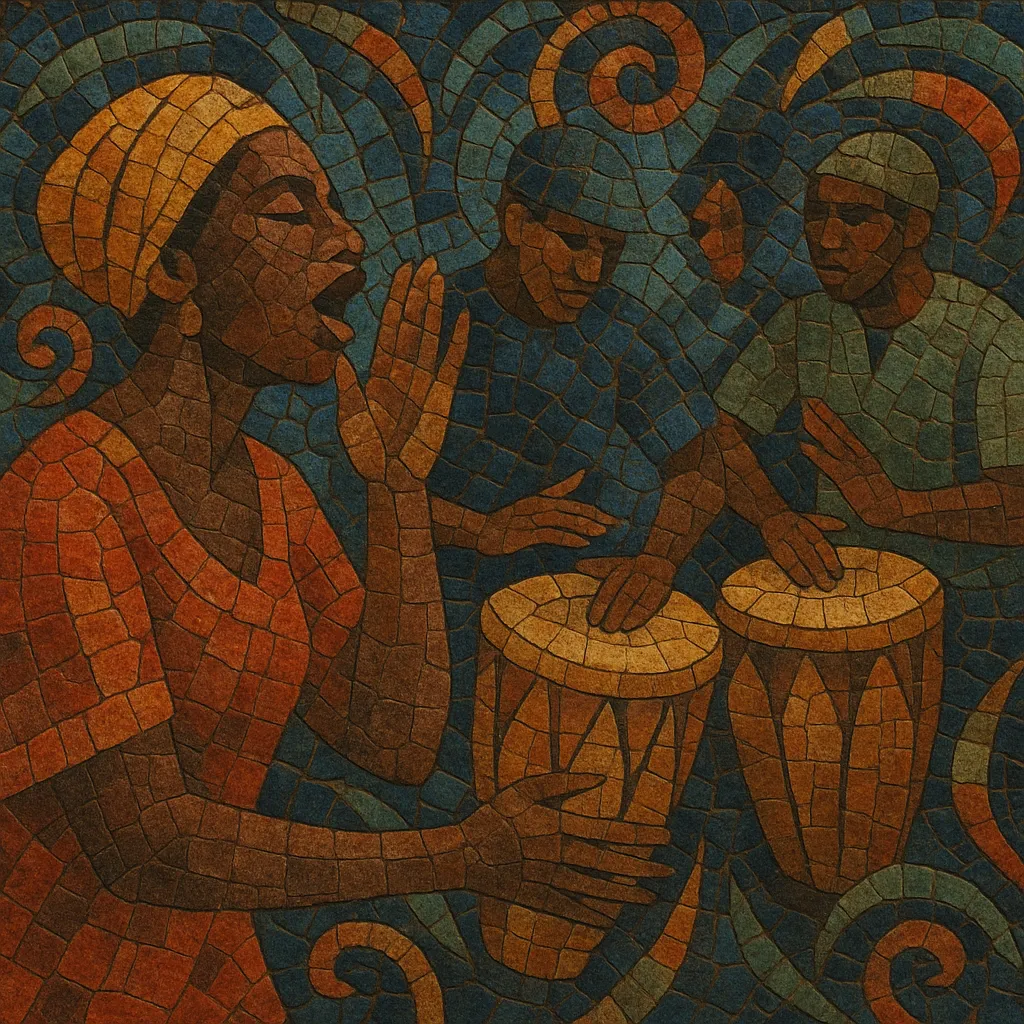Tassu (also written tassou or taasu) is a Wolof oral-poetry and praise-speaking tradition from Senegal, performed in a heightened, percussive speech that rides the complex polyrhythms of sabar drumming.
It is typically led by griottes (gëwël), whose rapid-fire declamation, boasts, genealogies, proverbs, and improvised panegyric function both as social commentary and as a way to honor patrons and community figures.
While intrinsically a spoken art, tassu often intersects with singing, ululation, and call-and-response refrains, and has been widely cited as a direct precursor to the cadence, flow, and performative stance of Senegalese hip hop (Rap Galsen) and to vocal interjections inside mbalax.
Tassu emerged within the Wolof griot (gëwël) tradition as a specialized form of spoken praise poetry. Rooted in courtly and communal ceremonies, it developed alongside sabar drum ensembles, where fixed patterns (bakks) and signal calls provided a rhythmic framework for extemporized speech. Its primary custodians were griottes, whose role combined historian, herald, and social critic.
In the 20th century, tassu moved from royal and village contexts into urban parties (ndawrabine) and public festivities in Dakar and other cities. Radio and later cassettes documented performances, while sabar masters standardized and expanded rhythmic vocabularies. Artists began to incorporate microphones, amplification, and arranged drum breaks that foregrounded the tassu voice.
From the late 1980s into the 1990s, tassu’s breathless delivery and rhetorical stance directly informed the rise of Senegalese hip hop. Acts such as Positive Black Soul, Daara J, and Pee Froiss adapted tassu-like flows, genealogical shout-outs, and call-and-response crowd work. Meanwhile, artists like Aby Ngana Diop brought tassu into studio settings, layering sabar with keyboards and guitars, which introduced international audiences to the form.
Today, tassu remains a living tradition at family ceremonies, wrestling events, and dance parties, while also serving as a technique and aesthetic within mbalax and rap. Digital sampling of sabar and archival recordings has further extended tassu’s reach, and its influence can be heard wherever Senegalese rhythmic speech meets drum-led groove.


